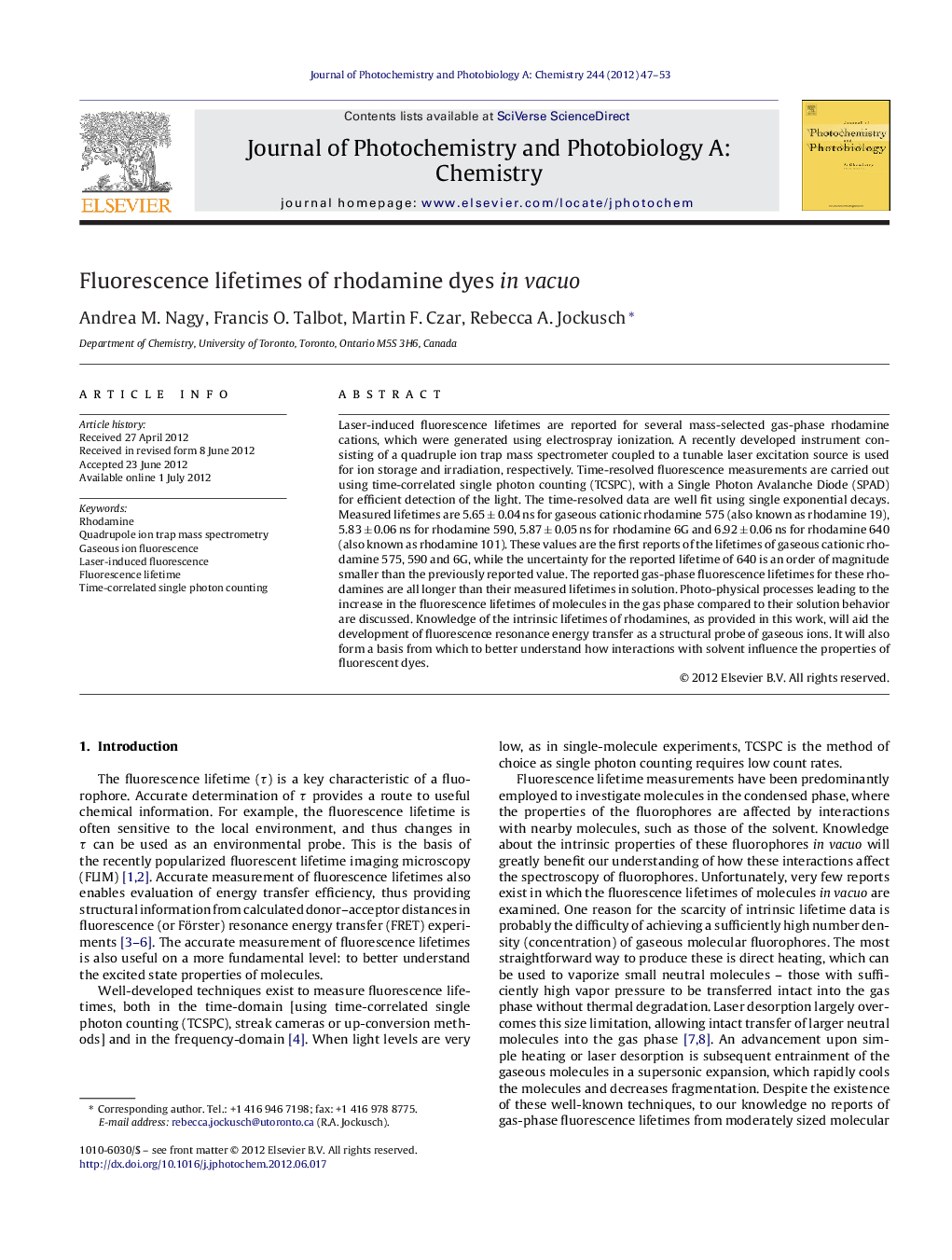| Article ID | Journal | Published Year | Pages | File Type |
|---|---|---|---|---|
| 26927 | Journal of Photochemistry and Photobiology A: Chemistry | 2012 | 7 Pages |
Laser-induced fluorescence lifetimes are reported for several mass-selected gas-phase rhodamine cations, which were generated using electrospray ionization. A recently developed instrument consisting of a quadruple ion trap mass spectrometer coupled to a tunable laser excitation source is used for ion storage and irradiation, respectively. Time-resolved fluorescence measurements are carried out using time-correlated single photon counting (TCSPC), with a Single Photon Avalanche Diode (SPAD) for efficient detection of the light. The time-resolved data are well fit using single exponential decays. Measured lifetimes are 5.65 ± 0.04 ns for gaseous cationic rhodamine 575 (also known as rhodamine 19), 5.83 ± 0.06 ns for rhodamine 590, 5.87 ± 0.05 ns for rhodamine 6G and 6.92 ± 0.06 ns for rhodamine 640 (also known as rhodamine 101). These values are the first reports of the lifetimes of gaseous cationic rhodamine 575, 590 and 6G, while the uncertainty for the reported lifetime of 640 is an order of magnitude smaller than the previously reported value. The reported gas-phase fluorescence lifetimes for these rhodamines are all longer than their measured lifetimes in solution. Photo-physical processes leading to the increase in the fluorescence lifetimes of molecules in the gas phase compared to their solution behavior are discussed. Knowledge of the intrinsic lifetimes of rhodamines, as provided in this work, will aid the development of fluorescence resonance energy transfer as a structural probe of gaseous ions. It will also form a basis from which to better understand how interactions with solvent influence the properties of fluorescent dyes.
Graphical abstractFigure optionsDownload full-size imageDownload as PowerPoint slideHighlights► We report the fluorescence lifetimes of four cationic rhodamine dyes in vacuo. ► The instrumentation used combines a trapping mass spectrometer with TCSPC. ► Measured lifetimes in vacuo are all longer than those in solution.
